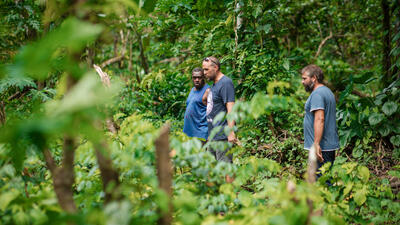
Our chance to accelerate the UN Sustainable Development Goals
Scaling up key transitions at the SDG Summit and Summit of the Future in New York
At the midpoint of the 2030 Agenda for Sustainable Development, the United Nations Sustainable Development Goals (SDGs) are far off track. Faced with numerous interlinked crises, only 15% of SDG targets with data are on track, while progress on most of the SDGs is either moving much too slowly or has regressed below the 2015 baseline.
Millions of people have fallen into poverty, and hunger is at levels not seen since 2005. Record numbers of people are displaced, and despite recurring climate disasters, the misguided war on nature continues. Yet, every bit of progress matters and counts.

The SDG Summit represents a pivotal moment at which it is possible to change course, move from rhetoric to action and break through to a better world. Bold, ambitious, and transformative actions are needed in key areas, anchored in international solidarity, human rights, and effective cooperation at all levels.
Through a set of High Impact Initiatives – consisting of six major SDG transitions, five critical means of implementation and the priority of gender equality – the United Nations will rally all actors behind transformative progress even under challenging global circumstances. This includes accelerating actions in social protection, energy transitions, education transformation, food systems, biodiversity and nature and digital transformation. The Summit aims to mobilize leadership and investment in these areas for the next seven years – the second half of the SDGs to 2030.
Our goal to deliver a rescue plan for people and planet must be supported by strong means of implementation. We need to urgently scale up investments in the SDGs, including an SDG Stimulus of $500 billion per year through 2030, along with deep reforms to the international financial architecture to ensure developing countries are at the decision-making table and can access the resources that they need, at fairer terms.
We must also address the unsustainable debt burdens concentrated in poor and middle-income countries.
Not only do they pose a systemic risk to the global financial system, but they also force some of the poorest countries into a choice between servicing debt and making essential investments in health and education.
We also need to provide developing countries with better access to trade and technology, as well as support to build their productive capacity and infrastructure. These would enable countries to connect with regional and global production and supply chains, while meeting environmental requirements and using digital trade infrastructures for e-commerce.

While the SDG Summit will be the centerpiece of this year, our work on SDG acceleration will continue far beyond, boosted by key transformations under Our Common Agenda and through inclusive, networked and effective multilateralism.
The aim of the Summit of the Future in 2024 will be to build upon the SDG Summit and breathe new life into the multilateral system, so that it can better respond to humanity’s most pressing challenges, turbocharge the implementation of the 2030 Agenda and SDG acceleration, and move us into the future we want.
In most developing countries, micro, small, and medium-sized enterprises (MSMEs) form the backbone of their economies. Successful transformations will hinge on achieving the SDGs at sub-national and local levels and ensuring that medium and small businesses and women-owned businesses are included and empowered during the process.
Enhancing the connection between global, regional, national and local partnerships for sustainable development can help to ensure all are engaged in key transitions from parliaments to civil society, the private sector, science and academia, children and youth, and local governments. At the United Nations, we stand ready as a critical partner to support countries in delivering their goals and ambitions towards 2030.

















